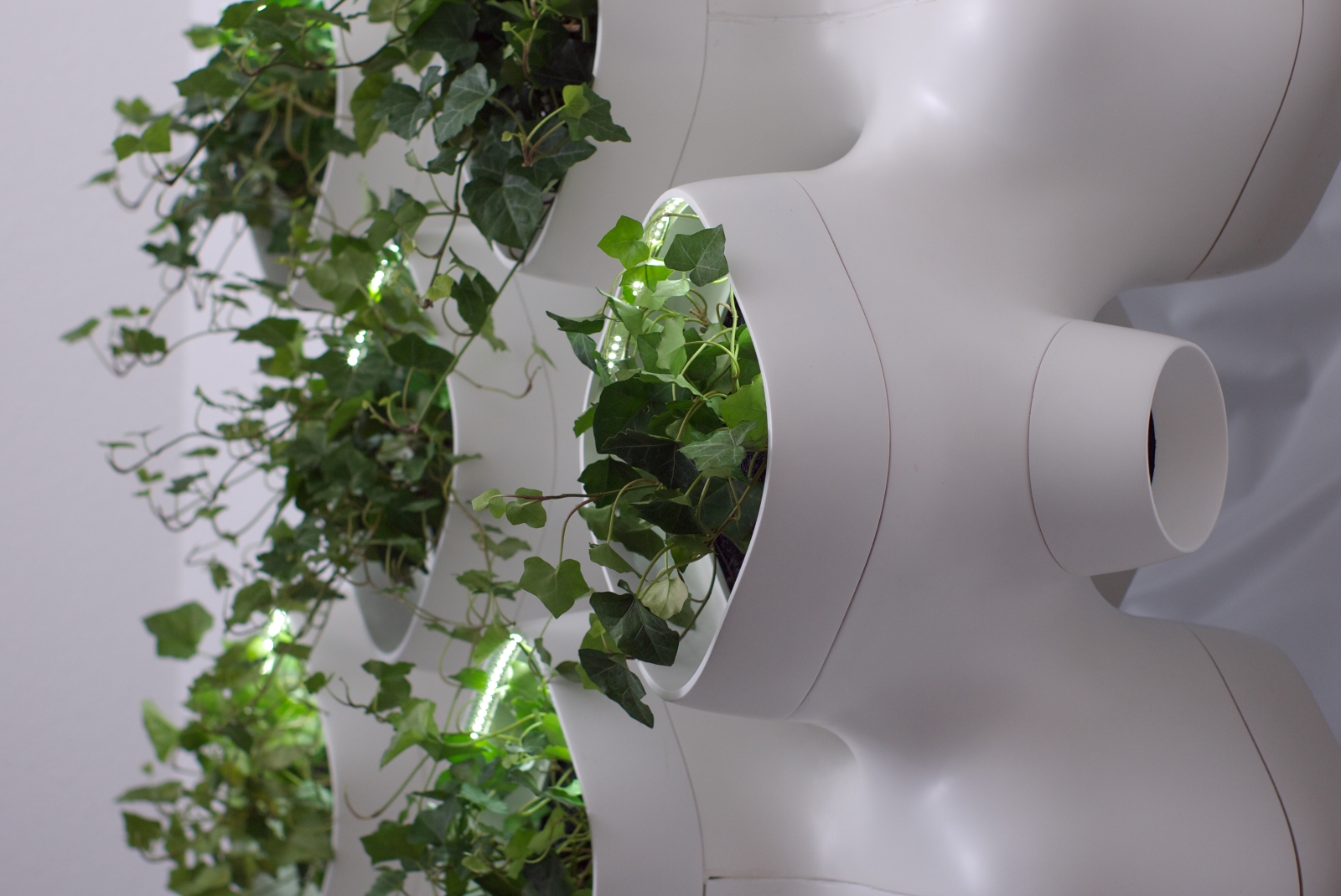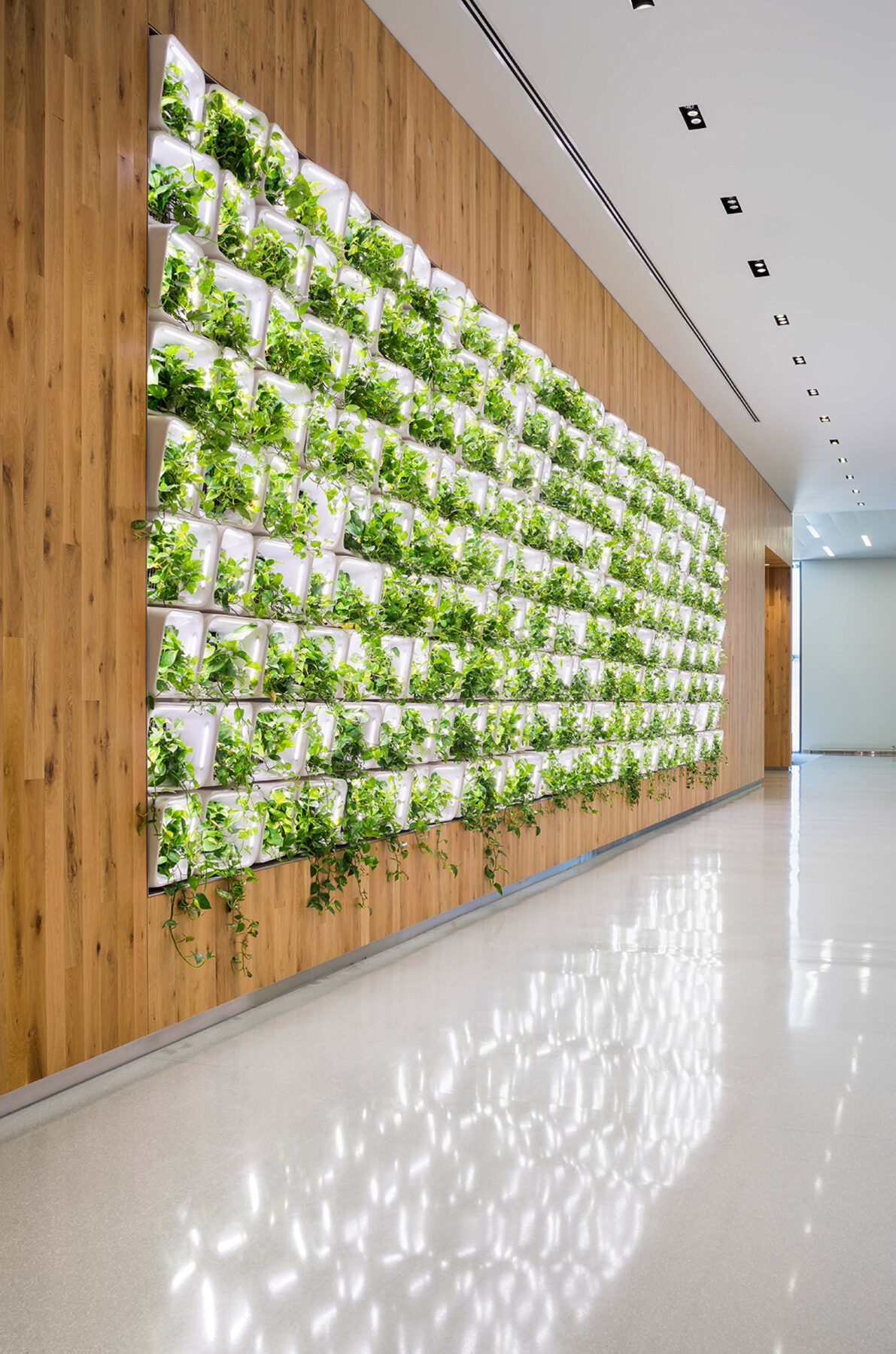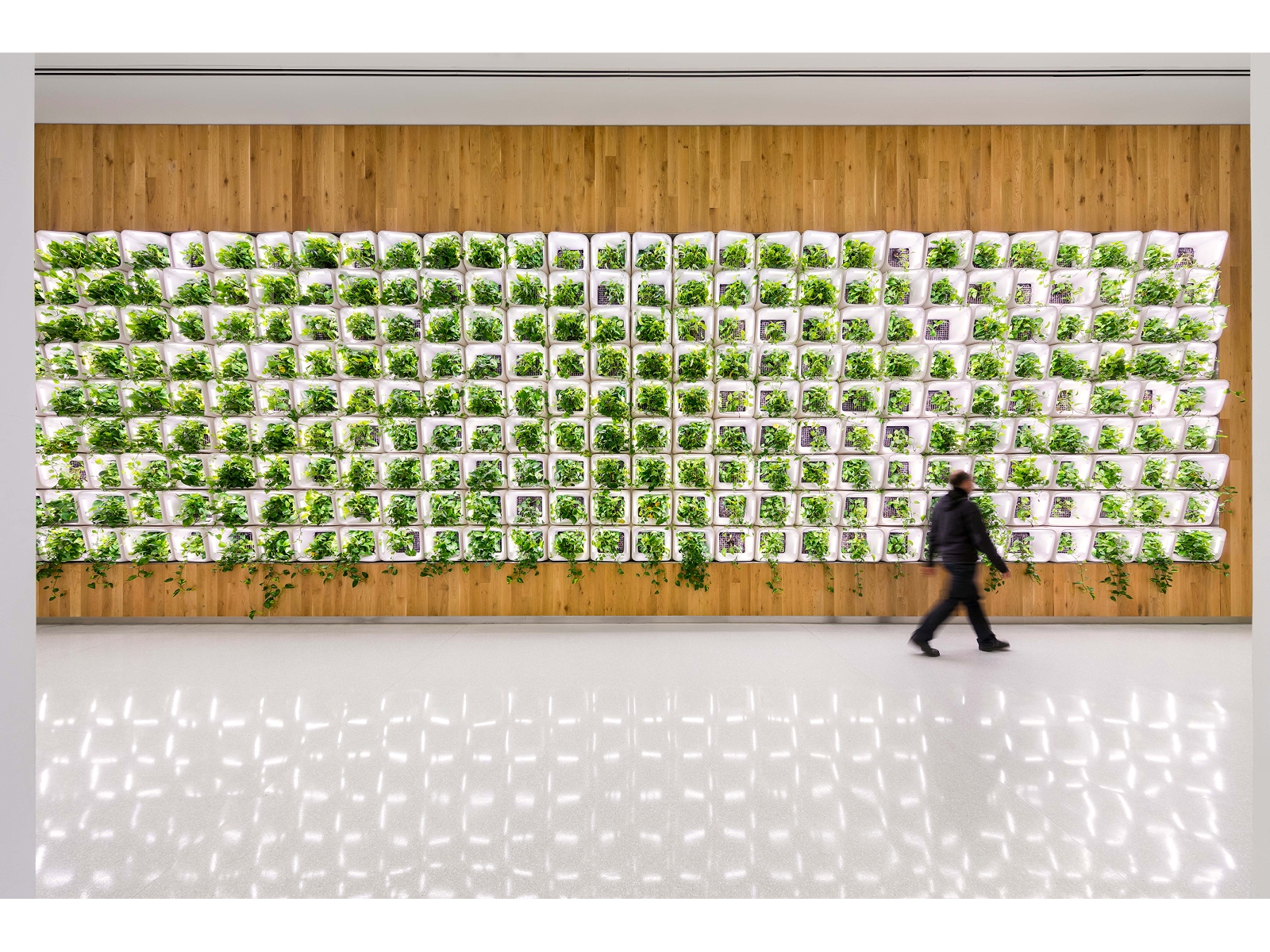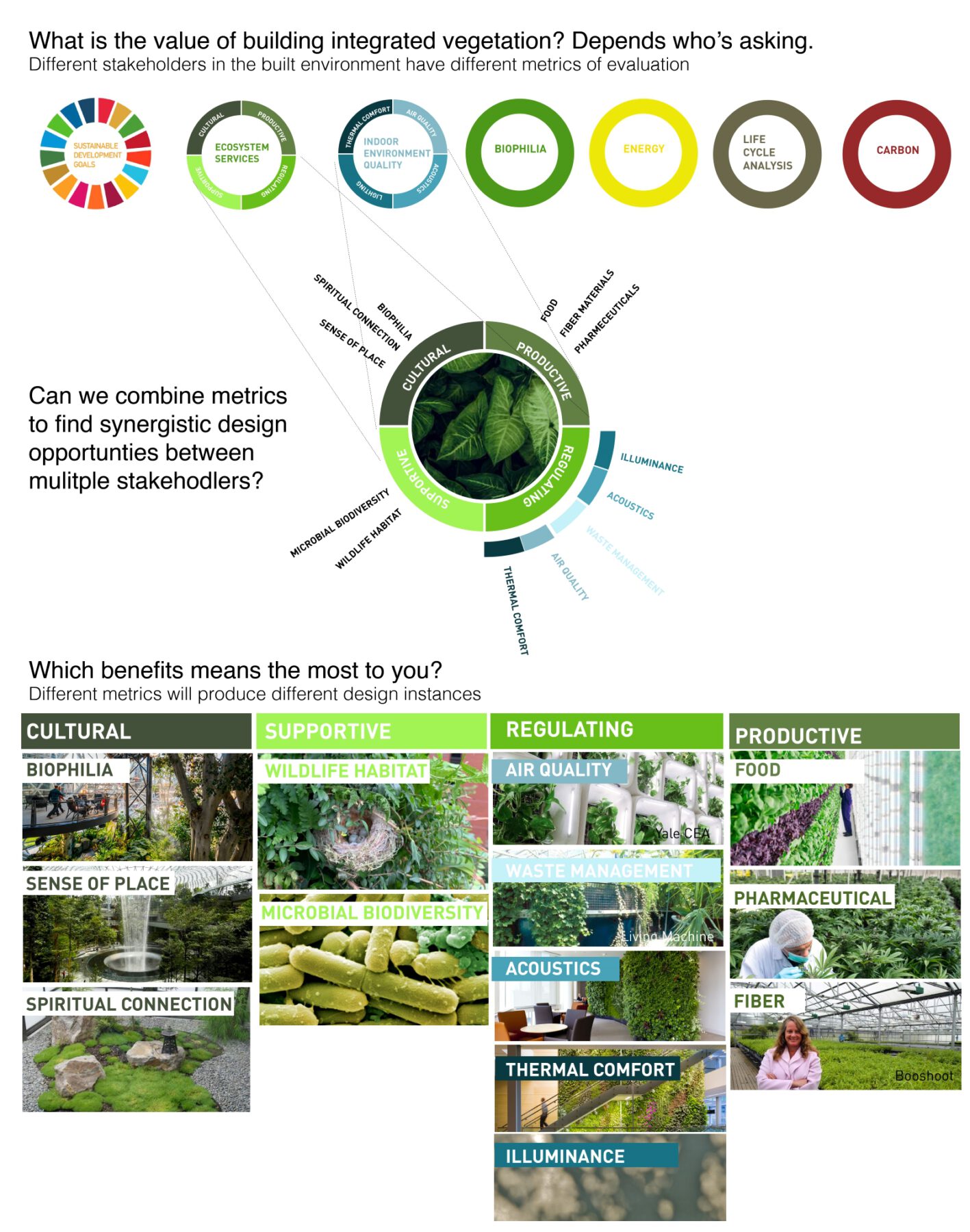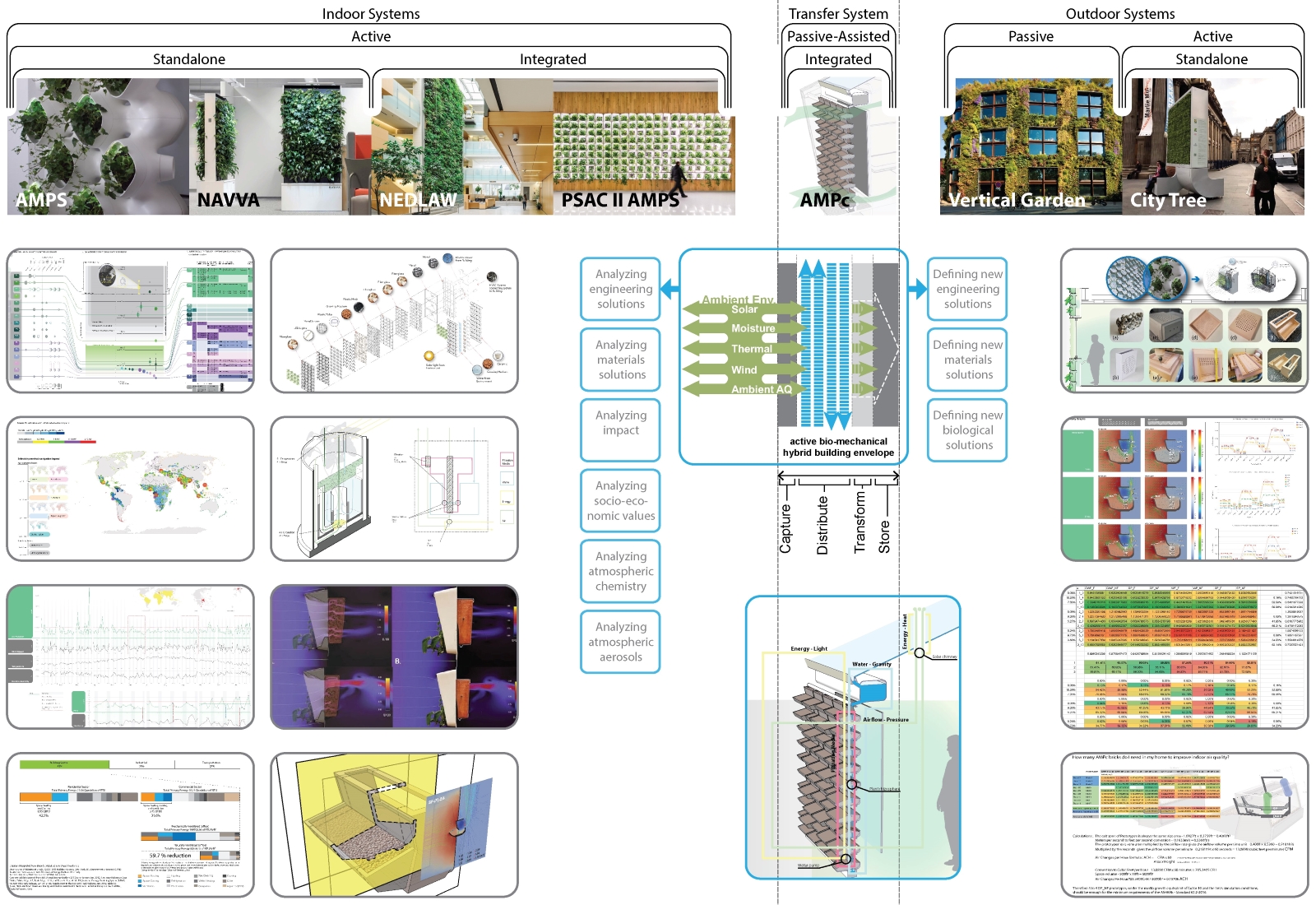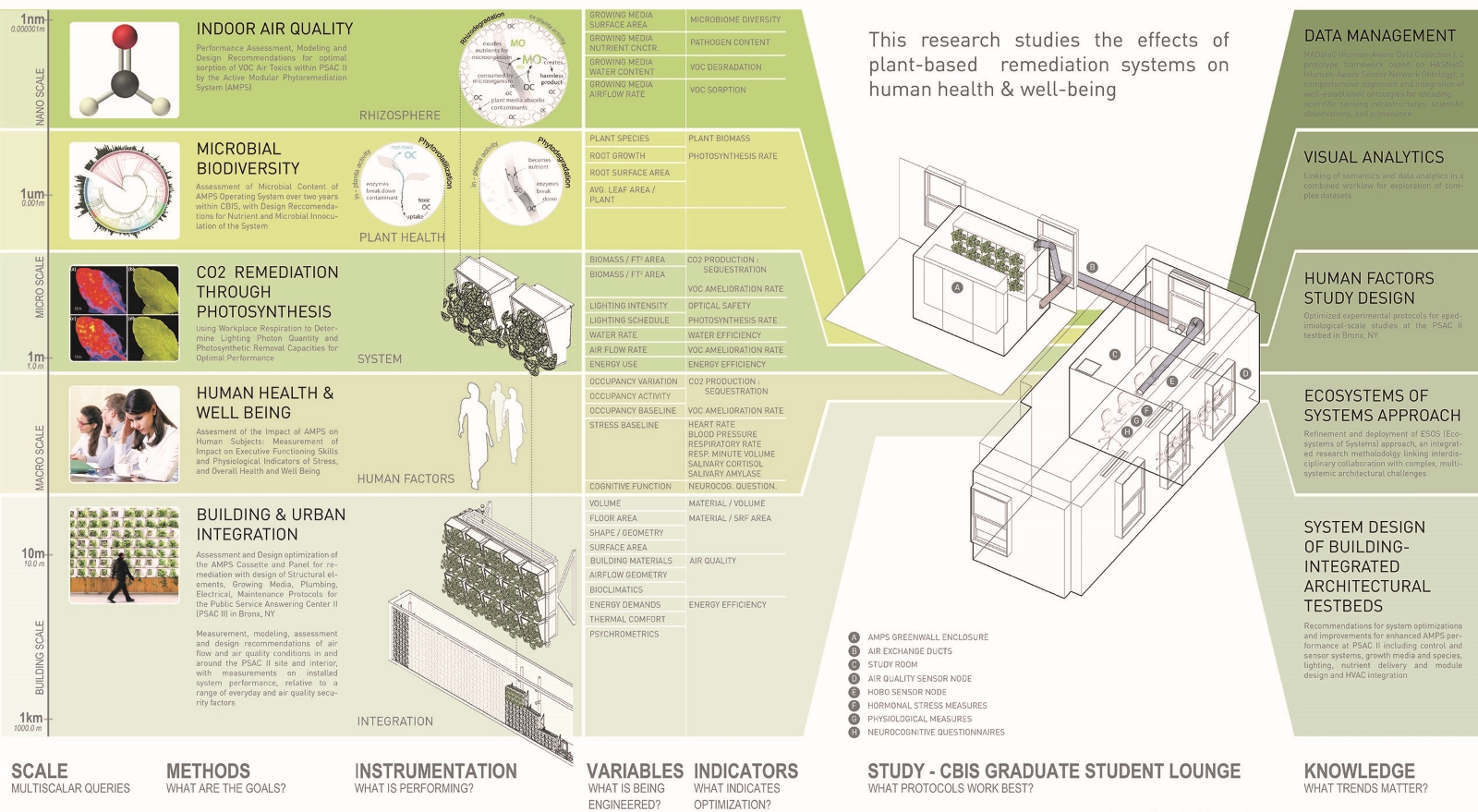“Moving Beyond Greenwashing!” is a project by the architect-engineer, Ph.D. researcher, environmental technologist Andreas Theodoridis and the architect and Ph.D. Researcher at the Yale Center for Ecosystems in Architecture, Christina Ciardullo. The subject of this research is the analysis and design proposal for the development of tools in the form of a digital platform for the evaluation of vegetation systems in the built environment. As architects have begun to integrate into their projects “Building Integrated Vegetated (BIV)” systems, the methods of their evaluation are still limited. “The aim is to provide designers with appropriate methods for evaluating evolving BIV systems, capable of estimating potential compound effective benefits of working with plants and living systems at the scale of the built environment.” as the duo state.
-text by Andreas Theodoridis & Christina Ciardullo
Active Modular Phytoremediation System (AMPS) prototype and demonstration unit. (CASE RPI / Yale CEA)
Our planet is undergoing a perilous growth of rapid urbanisation and ecosystems degradation.In response, architects have begun to integrate vegetation into buildings, such as green roofs and walls, indoors and out.
Beyond aesthetics, these systems are meant to be performative: they are meant to contribute to clean air and water (bioremediation), thermal comfort, and energy reduction (insulation and evapotranspiration), among other factors of human health and well-being, both physiological and psychological.
The first installation of the Active Modular Phytoremediation System (AMPS) in the Public Safety Answering Center II (PSAC II), in the Bronx, in New York, USA. (Image Courtesy of Skidmore, Owings & Merrill-SOM)
There is just as much excitement for these systems as there is scepticism, and just as much danger in wholly embracing them as in rejecting them. As interest in Building Integrated Vegetated (BIV) expands, architects require methods of evaluation that enable actionable decisions on their implementation. Before we continue to make what might be baseless claims on their anticipated performance and contribute to market-based greenwashing, and there-by further engender distrust in the potential of BIV, we require accurate data and accurate ways of interpreting that data. If not adequately characterised, there is a risk of introducing unfounded systems into buildings, or potentially worse – handicapping what could be effective solutions.
The first installation of the Active Modular Phytoremediation System (AMPS) in the Public Safety Answering Center II (PSAC II), in the Bronx, in New York, USA. (Image Courtesy of Skidmore, Owings & Merrill-SOM)
Currently, vegetated systems are compared to their mechanical counterparts: in terms of air quality, they are compared with mechanical ventilation or filters, and in terms of thermal comfort and energy calculations, they are compared to other types of insulation. Emergent from a classical scientific method that tends to measure and respond to one variable at a time, mechanical systems can be efficient for their individual functions (ie thermal comfort and air quality). Yet, in context, we know these systems to be in-effective, energetically or materially intensive, and the source of other unwanted byproducts. Following in that mechanical tradition, architectural legislation often specifies that systems respond to specific efficiency rates. Yet as architects, we know that the delivery of the built environment is not the delivery of a series of additive systems, each specific to its function, but the design of whole interdependent environments. Narrow efficient performance evaluations can stifle novel innovations which seek more effective holistic architectural solutions.
The potential functions, benefits, services, and challenges of indoor vegetation could be measured any number of ways, and each stakeholder in the built environment process will be concerned with a particular metric, or a particular point of view. Could we manage to map the same properties of these vegetation systems to see where we can create synergistic opportunities to speak to multiple stakeholders simultaneously? In this image Indoor Environmental Quality metrics become a subset of the UN’s “Ecosystem Services” metrics which is one way to frame value through productive, regulating, supporting, and cultural services of ecosystems. (Yale CEA)
So what if we were to combine performances? What would it mean to evaluate plants not just on their ability to sequester CO2, metabolise indoor air pollutants, or provide insulation (and then compare those to conventional mechanical and material techniques); what if we were to compare vegetated systems on their ability to do all of the above? And further, including the functional outcomes, we cannot achieve with non-living systems, such as producing food or combating the depression related to a disconnect with the natural world? Would the same design, or different aspects of the same vegetated system combined, be able to offset more conventional methods?
Establishing more effective frameworks for valuing BIV systems requires a shift towards more comprehensive metrics, including life-cycle analysis, various health benefits, or other social values, which could offer a more holistic picture of value.
Theoretical framework for the inception, development, and evaluation of novel biophysical envelope systems with the use of tools and analysis such as air pollution and human health comprehensive diagrams, socio-economical regions of implementation and corresponding impact, computational fluid dynamics (CFD) work, along with the analysis of the existing systems in the level of their overall functional and philosophical approach for performance. (CASE RPI / Yale CEA)
We are developing digital tools that incorporate the effective benefits of adaptation of BIV and their biological components, sizing and assessing the outcomes of greenwalls and vegetation systems which are symbiotic with the current human-only built environment.
The aim is to provide designers with appropriate methods for evaluating evolving BIV systems, capable of estimating potential compound effective benefits of working with plants and living systems at the scale of the built environment.
Diagrammatic representation of multiscalar and multivariable experimental setup for evaluating human health-related impacts of vegetative systems in addition to related nutritional factors. (RPI CASE / Yale CEA)
Credits & Details:
Project title: Moving Beyond Greenwashing!
Project team: Andreas Theodoridis, Christina Ciardullo
Διαβάστε το αφιέρωμα της Lifo στο έργο του Ανδρέα Θεοδωρίδη εδώ: https://bit.ly/38ZjXom
Bios:
Andreas Theodoridis is a practicing architect-engineer and environmental technologist with a Ph.D. from the Center for Architecture Science and Ecology -CASE- a research center of Rensselaer Polytechnic Institute based in NYC, and a research collaborator at the Center for Architecture Ecosystems -CEA- at Yale University. He holds a Diploma in Architecture and Engineering from the Aristotle University of Thessaloniki in Greece and an MS in Sustainable Environmental Systems from Pratt Institute. His research is inherently interdisciplinary, merging twenty-five years of experience in building construction and fabrication with applied research on building systems and environmental initiatives on an urban scale. Theodoridis is the founder of UNited Atmospheres, an experimental design practice, and consultancy based between New York and Athens. Theodoridis has also taught and lectured at leading academic institutions, including Syracuse University and Columbia University’s Global Networking Programs in Greece. His work has been exhibited widely in several architectural exhibitions and fora, including the Venice Architecture Biennale and the NYCx Design week, among other venues.
Christina Ciardullo AIA is a Senior Architect, partner and founder of the award-winning space architecture firm SEArch+ (Space Exploration Architecture) and PhD Researcher at the Yale Center for Ecosystems in Architecture. With an undergraduate background in astronomy and philosophy, and a Masters of Architecture from Columbia University, Christina bridges a career between practice and research at the intersection of the natural sciences and the built environment, designing for a sustainable future for Earth and Space. She has worked in design positions at NYC Planning, NASA’s Habitability Design Center, and the award winning firms of Foster+Partners and Ennead Architects. She was the 2015/2016 Carnegie Mellon University Anna Kalla Fellow and the 2016 Buckminster Fuller Institute Fellow. Her work at SEArch+ won the 2015, 2019, and 2021 NASA Centennial Challenges. Her current PhD work focuses on the integration of vegetation in and on buildings towards more sustainable cities.
READ ALSO: Villa Vari in Attica, Greece | Nysa
